javascript数据结构与算法学习笔记
Posted 忆无痕
tags:
篇首语:本文由小常识网(cha138.com)小编为大家整理,主要介绍了javascript数据结构与算法学习笔记相关的知识,希望对你有一定的参考价值。
1. 栈结构
1.1 栈的介绍
栈是一种遵循后进先出(Last In First Out / LIFO) 原则的一种有序集合。
新添加或者要删除的元素都会保存在栈的同一端,我们把它叫做栈顶,另外一端叫做栈底。
1.2 栈的方法
- push:将数据压入栈
- pop:删除并返回栈顶元素(此方法会修改栈)
- peek:返回栈顶元素,但不修改栈
- size:查看栈内的数据个数
- isEmpty:判断栈内是否为空
- isString:将栈内的数据转化为字符串输出
- clear:清空栈
1.3 栈的封装
/* 栈结构封装 */
export class Stack
#items = [] // 添加#表示私有属性
// 出栈
pop()
return this.#items.pop()
// 压栈/入栈
push(element)
this.#items.push(element)
// 返回栈顶元素
peek()
// return this.#items[#items.length - 1]
return this.#items.at(-1)
// 判断栈是否为空
isEmpty()
return this.#items.length === 0
// 栈的元素个数
size()
return this.#items.length
// 清空栈
clear()
this.#items = []
// 转换成字符串
toString()
return this.#items.join(" ")
1.4 示例
/* 十进制转二/八/十六进制
@params number num 需转换的数值
@param number= base 转换的进制,默认为二进制
*/
function convert(num, base = 2)
const stack = new Stack();
const baseStringMap = \'0123456789ABCDEF\';
let result = \'\';
while (num > 0)
stack.push(num % base);
num = Math.floor(num / base);
while (!stack.isEmpty())
result += baseStringMap[stack.pop()];
return result;
2. 队列
2.1 队列是什么
队列是是一种受限的线性表,特点为先进先出(FIFO:first in first out)。
- 受限之处在于它只允许在表的前端(front)进行删除操作;
- 在表的后端(rear)进行插入操作;
2.2 队列的方法
- enqueue(element):向队列尾部添加一个(或多个)新的项;
- dequeue:移除队列的第一(即排在队列最前面的)项,并返回被移除的元素;
- front:返回队列中的第一个元素——最先被添加,也将是最先被移除的元素。队列不做任何变动(不移除元素,只返回元素信息与Stack类的peek方法非常类似);
- isEmpty:如果队列中不包含任何元素,返回true,否则返回false;
- size:返回队列包含的元素个数,与数组的length属性类似;
- toString:将队列中的内容,转成字符串形式;
2.3 队列的封装
2.3.1 基于数组封装
删除前面元素时,后边元素都会移动,性能不好
class Queue
#items = [];
// 出列
dequeue()
return this.#items.shift();
// 入列
enqueue(element)
this.#items.push(element);
// 返回队头
front()
return this.#items[0];
// 判断队列是否为空
isEmpty()
return this.#items.length === 0;
// 队列的元素个数
size()
return this.#items.length;
// 清空队列
clear()
this.#items = [];
// 转换成字符串
toString()
return this.#items.join(\' \');
2.3.2 基于对象封装
class Queue
#items = ;
#headIndex = 0; // 记录队头索引
#index = 0;
// 出列
dequeue()
if (this.isEmpty()) return;
const res = this.#items[this.#headIndex];
delete this.#items[this.#headIndex];
this.#headIndex++;
return res;
// 入列
enqueue(element)
this.#items[this.#index] = element;
this.#index++;
// 返回队头
front()
return this.#items[this.#headIndex];
// 判断队列是否为空
isEmpty()
return this.size === 0;
// 队列的元素个数
size()
return this.#index - this.#headIndex;
// 清空队列
clear()
this.#items = ;
this.#headIndex = 0;
this.#index = 0;
// 转换成字符串
toString()
let str = \'\'
for (let i = this.#headIndex; i < this.#index; i++)
str += `$this.#items[i] `;
return str
3. 链表
3.1 链表介绍
链表用来存储有序的元素集合,与数组不同,链表中的元素并非保存在连续的存储空间内,每个元素由一个存储元素本身的节点和一个指向下一个元素的指针构成。当要移动或删除元素时,只需要修改相应元素上的指针就可以了。对链表元素的操作要比对数组元素的操作效率更高。下面是链表数据结构的示意图:
3.2 链表的特点
- 插入、删除数据效率高O(1)级别(只需要更改指针指向即可),随机访问效率低O(n)级别(需要从链头至链尾进行遍历)
- 和数组相比,内存空间消耗更大,因为每个存储数据的节点都需要额外的空间存储后继指针
3.3 单链表
3.3.1 单列表的特点
每个节点只包含一个指针,即后级指针

3.4.2 单列表的封装
class Node
constructor(element)
this.element = element;
this.next = null;
class LinkedList
constructor()
this.length = 0
this.head = null
append(element)
const node = new Node(element);
if (this.head === null)
this.head = node;
else
let current = this.head;
while (current.next !== null)
current = current.next;
current.next = node;
this.length++;
removeAt(index)
if (index >= 0 && index < this.length)
let current = this.head;
if (index === 0)
this.head = this.head.next;
else
let previous = this.getNodeAt(index - 1);
current = previous.next;
previous.next = current.next; // 跳过/删除当前元素
this.length--;
return current.element;
getNodeAt(index)
if (index >= 0 && index < this.length)
let node = this.head;
if (index === 0)
return this.head.element;
else
for (let i = 0; i < index; i++)
node = node.next;
return node;
getElementAt(index)
return this.getNodeAt(index).element;
equalFn(a, b)
return JSON.stringify(a) === JSON.stringify(b);
indexOf(element)
let node = this.head;
for (let i = 0; i < this.length; i++)
if (this.equalFn(node.element, element))
return i;
else
node = node.next;
return -1;
remove(element)
const index = this.indexOf(element);
return this.removeAt(index);
insert(element, index)
if (index >= 0 && index < this.length)
const node = new Node(element);
if (index === 0)
const current = this.head;
this.head = node;
node.next = current;
else
const current = this.getNodeAt(index);
const previous = this.getNodeAt(index - 1);
previous.next = node;
node.next = current;
this.length++;
return true;
return false;
size()
return this.length;
isEmpty()
return this.length === 0;
getHead()
return this.head;
clear()
this.length = 0;
this.head = null;
toString()
let node = this.head;
let str = \'\';
while (node)
str += `$node.element `;
node = node.next;
str = str.slice(0, -1);
return str;
3.4 双列表
3.4.1 双列表介绍
双向链表也叫双链表,是链表的一种,它的每个数据节点中都有两个指针,分别指向直接后继和直接前驱。所以,从双向链表中的任意一个结点开始,都可以很方便地访问它的前驱结点和后继结点。一般我们都构造双向循环链表。

3.4.2 双向列表的特点
- 可以使用head和一个tail分别指向头部和尾部的节点
- 每个节点都由三部分组成:前一个节点的指针,后一个节点的指针,元素
- 双向链表的第一个节点prev是null
- 双向链表的最后的节点next是null;
3.4.3 双向列表的方法
-
append(element):向链表尾部添加一个新的项
-
insert(position,element):向链表的特定位置插入一个新的项
-
get(position):获取对应位置的元素
-
indexOf(element):返回元素在列表上的索引。如果链表上没有该元素则返回-1
-
updata(position,element):更新某个元素
-
removeAt(position):从链表的特定位置移除一项(根据位置)
-
remove(element):从链表移除一项(根据元素)
-
isEmpty():如果链表中不包含任何元素,返回true,如果链表长度大于0则返回false。
-
size():返回链表包含的元素个数。
-
tostring():输出
-
forwardString():返回正向遍历的节点字符串形式
-
backwarkString():返回反向遍历的节点字符串形式
3.4.4 双向列表的封装
class DoublyNode
constructor(element)
this.prev = null;
this.next = null;
this.element = element;
class DoublyLinkedList
constructor()
this.length = 0;
this.head = null;
this.tail = null;
append(element)
const node = new DoublyNode(element);
if (this.length === 0)
this.head = node;
this.tail = node;
else
this.tail.next = node;
node.prev = this.tail;
this.tail = node;
this.length++;
insert(index, element)
// 越界判断
if (index < 0 || index > this.length) throw Error(\'输入的 index 无效\');
const node = new DoublyNode(element);
// 1.添加的位置在链表头
if (index === 0)
if (this.length === 0)
// a.链表原本为空
this.head = node;
this.tail = node;
else
// b.链表原本有结点
node.next = this.head;
this.head.prev = node;
this.head = node;
else if (index === this.length)
// 2.添加的位置在链表尾
this.tail.next = node;
node.prev = this.tail;
this.tail = node;
else
// 3.添加的位置在中间
let current = this.head;
for (let i = 0; i < index; i++)
current = current.next;
current.prev.next = node;
node.prev = current.prev;
node.next = current;
current.prev = node;
this.length++;
getNode(index)
if (index < 0 || index >= this.length) return new Error(\'无效index\');
let current;
if (index < this.length / 2)
current = this.head;
for (let i = 0; i < index; i++)
current = current.next;
else
current = this.tail;
for (let i = this.length - 1; i > index; i--)
current = current.prev;
return current;
get(index)
return this.getNode(index).element;
indexOf(element)
let current = this.head;
for (let i = 0; i < this.length; i++)
if (current.element === element)
return i;
current = current.next;
update(index, element)
const node = this.getNode(index);
node.element = element;
removeAt(index)
if (index >= 0 && index < this.length)
let current = this.head;
if (index === 0)
this.head = current.next;
if (this.length === 1)
this.tail = null;
else
this.head.prev = null;
else if (index === this.length - 1)
current = this.tail;
this.tail = current.prev;
this.tail.next = null;
else
current = this.getNode(index);
const prevNode = current.prev;
const nextNode = current.next;
prevNode.next = nextNode;
nextNode.prev = prevNode;
this.length--;
return current.element;
return false;
remove(element)
const index = this.indexOf(element);
this.removeAt(index);
isEmpty()
return this.length === 0;
size()
return this.length;
clear()
this.head = null;
this.tail = null;
this.length = 0;
3.5 循环列表
3.5.1 循环列表介绍
循环列表和单向列表的区别在于,最后一个元素指向下一个元素的指针,不是引用undefined,而是指向第一个元素

3.5.2 循环列表封装
class Node
constructor(element)
this.element = element;
this.next = null;
class CircularLinkedList extends LinkedList
constructor()
super();
append(element)
const node = new Node(element);
let current;
if (this.head === null)
this.head = node;
else
current = this.getNodeAt(this.size() - 1);
current.next = node;
node.next = this.head;
this.count++;
insert(element, index)
if (index >= 0 && index < this.length)
const node = new Node(element);
let current = this.head;
if (index === 0)
if (this.head === null)
this.head = node;
node.next = this.head;
else
node.next = current;
current = this.getNodeAt(this.size() - 1);
this.head = node;
current.next = this.head;
else
prevNode = this.getNodeAt(index - 1);
node.next = prevNode.next;
prevNode.next = node;
this.length++;
return true;
return false;
removeAt(index)
if (index >= 0 && index < this.length)
let current = this.head;
if (index === 0)
if (this.length === 1)
this.head = null;
else
const tailNode = this.getNodeAt(this.length - 1)
this.head = this.head.next
tailNode.next = this.head
else
const prevNode = this.getNodeAt(index - 1)
current = prevNode.next
prevNode.next = current.next
this.length--;
return current.element;
return;
4. 集合(Set)
集合是一组无需且唯一的项组成的
class Set
items = ;
add(element)
if (this.has(element)) return false;
this.items[element] = element;
return true
delete(element)
if (this.has(element))
delete this.items[element]
return true
return false
has(element)
return element in this.items;
clear()
this.items =
size()
return Object.keys(this.items).length
values()
return Object.values(this.items)
5. 字典(Map)
字典和集合很相似,集合以[值,值]的形式存储元素,字典则是以[键,值]的形式存储元素。字典也称作映射、符号表或关联数组
class KeyValue
constructor(key, value)
this.key = key;
this.value = value;
class Map
table = ;
toStringFn(item)
if (item === null)
return \'null\';
else if (item === undefined)
return \'undefined\';
else if (typeof item === \'string\' || item instanceof String)
return item;
return JSON.stringify(item);
hasKey()
return this.table[this.toStringFn(key)] !== null;
get()
const keyValue = this.table[this.toStringFn(key)];
return keyValue == null ? undefined : keyValue.value;
set(key, value)
if (key != null && value != null)
const tableKey = this.toStringFn(key);
this.table[tableKey] = new KeyValue(key, value);
return true;
return false;
delete(key)
if (this.hasKey(key))
delete this.table[this.toStringFn(key)];
return true;
return false;
keys()
return Object.vlaues(this.table).map((item) => item.key);
values()
return Object.vlaues(this.table).map((item) => item.value);
entries()
return Object.values(this.table);
size()
return Object.keys(this.table).length
isEmpty()
return this.size() === 0
clear()
this.table =
6. 散列表
HashMap类,它是Dictionary类的一种散列表实现方式。散列算法的作用是尽可能快的在数据结构中找到一个值
class KeyValue
constructor(key, value)
this.key = key;
this.value = value;
class HashMap
hashTable = ;
toStringFn(item)
if (item === null)
return \'null\';
else if (item === undefined)
return \'undefined\';
else if (typeof item === \'string\' || item instanceof String)
return item;
return JSON.stringify(item);
hashCode(key)
if (typeof key === \'number\')
return key;
const tableKey = this.toStringFn(key);
let hash = 5381;
for (let i = 0; i < tableKey.length; i++)
hash += (hash * 33) + tableKey.charCodeAt(i);
return hash % 1013;
set(key, value)
if (key != null && value != null)
const position = this.hashCode(key);
this.hashTable[position] = new KeyValue(key, value);
return true;
return false;
get(key)
const keyValue = this.hashTable[this.hashCode(key)];
return keyValue == null ? undefined : keyValue.value;
remove(key)
const hash = this.hashCode(key);
const keyValue = this.hashTable[hash];
if (keyValue != null)
delete this.hashTable(hash);
return true;
return false;
7. 树
树是一种分层数据的抽象模型
7.1 二叉树
二叉树中的节点最多只能有两个子节点:一个是左侧子节点,另一个是右侧子节点
7.2 二叉搜索树
7.2.1 二叉搜索树介绍
二叉搜索树(BST)是二叉树的一种,但是只允许你左侧节点存储(比父节点)小的值,右侧节点存储比父节点大的值
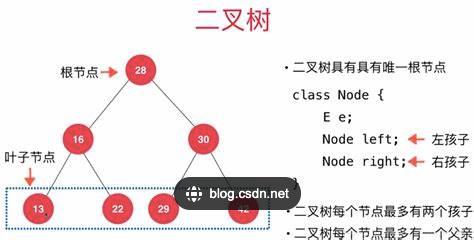
7.2.2 二叉搜索树封装
class Node
constructor(key)
this.key = key;
this.left = null;
this.right = null;
const Compare =
less: -1,
bigger: 1,
equal: 0,
;
function compareFn(a, b)
return a === b ? Compare.equal : a < b ? Compare.less : Compare.bigger;
class BST
constructor()
this.root = null;
insert(key)
if (this.root == null)
this.root = new Node(key);
else
this.insertNode(this.root, key);
insertNode(node, key)
if (compareFn(key, node.key) === Compare.less)
if (node.left == null)
node.left = new Node(key);
else
this.insertNode(node.left, key);
else
if (node.right == null)
node.right = new Node(key);
else
this.insertNode(node.right, key);
// 中序遍历
inOrderMap(callback)
this.inOrderMapNode(this.root, callback);
inOrderMapNode(node, callback)
if (node != null)
this.inOrderMapNode(node.left, callback);
callback(node.key);
this.inOrderMapNode(node.right, callback);
// 先序遍历
preOrderMap(callback)
this.#preOrderMapNode(this.root, callback);
#preOrderMapNode(node, callback)
if (node != null)
callback(node.key);
this.#preOrderMapNode(node.left, callback);
this.#preOrderMapNode(node.right, callback);
// 后序遍历
postOrderMap(callback)
this.#postOrderMapNode(this.root, callback);
#postOrderMapNode(node, callback)
if (node != null)
this.#postOrderMapNode(node.left, callback);
this.#postOrderMapNode(node.right, callback);
callback(node.key);
min()
return this.#minNode(this.root);
#minNode(node)
let current = node;
while (current != null && current.left != null)
current = current.left;
return current;
max()
return this.#maxNode(this.root);
#maxNode(node)
let current = node;
while (current != null && current.right != null)
current = current.right;
return current;
search(key)
return this.#searchNode(this.root, key);
#searchNode(node, key)
if (node == null)
return false;
if (this.compareFn(key, node.key) === Compare.less)
return this.#searchNode(node.left, key);
else if (this.compareFn(key, node.key) === Compare.bigger)
return this.#searchNode(node.right, key);
else
return true;
remove(key)
this.#removeNode(this.root, key);
#removeNode(node, key)
if (node === null)
return null;
if (this.compareFn(key, node.key) === Compare.less)
node.left = this.#removeNode(node.left, key);
return node;
else if (this.compareFn(key, node.key) === Compare.bigger)
node.right = this.#removeNode(node.right, key);
return node;
else
// 位于树末端,左右子节点为空
if (node.left == null && node.right == null)
node = null;
return node;
// 左子节点或右子节点为空
if (node.left == null)
node = node.right;
return node;
else if (node.right == null)
node = node.left;
return node;
// 左右子节点都不为空
const target = this.#minNode(node.right);
node.key = target.key;
node.right = this.#removeNode(node.right, target.key);
return node;
7.2.3 遍历
- 中序遍历是一种以上行顺序访问BST所有节点的遍历方式,也就是从最小到最大的顺序访问所有节点。中序遍历的一种应用就是对树进行排序操作
- 先序遍历是以优先于后代节点的顺序访问每个节点的。先序遍历的一种应用是打印一个结构化的文档。
- 后序遍历则是先访问节点的后代节点,再访问节点本身。后序遍历的一种应用是计算一个目录及其子目录中所有文件所占空间的大小
7.2.4 移除

8. 二叉堆
二叉堆是一种特殊的二叉树,有以下两个特性
- 它是一颗完全的二叉树,表示树的每一层都有左侧和右侧子节点(除了最后一层的叶节点),并且最后一层的叶节点尽可能都是左侧子节点,这叫做结构特性
- 二叉堆不是最小堆就是最大堆。最小堆允许你快速导出树的最小值, 最大堆允许你快速导出树的最大值。所有的节点都大于等于(最大堆)或小于等于(最小堆)每个它的子节点。这叫做堆特性

8.1 最小堆
所有的节点都小于等于每个它的子节点
const Compare =
less: -1,
bigger: 1,
equal: 0,
;
function compareFn(a, b)
return a === b ? Compare.equal : a < b ? Compare.less : Compare.bigger;
// 交换位置
function swap(array, index1, index2)
const temp = array[index1];
array[index1] = array[index2];
array[index2] = temp;
class MinHeap
heap = []; // 数组管理数据
// 左侧子节点的索引
#getLeftIndex(index)
return 2 * index + 1;
// 右侧子节点的索引
#getRightIndex(index)
return 2 * index + 2;
#getParentIndex(index)
return Math.floor((index - 1) / 2);
#shiftUp(index)
let parentIndex = this.#getParentIndex(index);
while (
index > 0 &&
compareFn(this.heap[parentIndex], this.heap[index]) === Compare.bigger
)
swap(this.heap, parentIndex, index);
index = parentIndex;
parentIndex = this.#getParentIndex(index);
insert(value)
if (value != null)
this.heap.push(value);
// 与父节点对比,如果比父节点小,交换位置
this.#shiftUp(this.heap.length - 1);
return true;
size()
return this.heap.length;
isEmpty()
return this.size() === 0;
findTarget()
return this.heap[0];
// 导出最小值
extract()
if (this.isEmpty())
return;
if (this.size() === 1)
return this.heap.shift();
const removed = this.heap[0];
this.heap[0] = this.heap.pop();
return removed;
// 向下交换位置
shiftDown(index)
let current = index
let left = this.#getLeftIndex(index)
let right = this.#getRightIndex(index)
if (this.compareFn(this.heap[current], this.heap[left]) === Compare.bigger)
current = left
if (
this.compareFn(this.heap[current], this.heap[right]) === Compare.bigger
)
current = right;
if (index !== current)
swap(this.heap, index, current)
this.shiftDown(current)
8.2 最大堆
所有的节点都大于等于每个它的子节点
const Compare =
less: -1,
bigger: 1,
equal: 0,
;
function compareFn(a, b)
return a === b ? Compare.equal : a < b ? Compare.less : Compare.bigger;
// 交换位置
function swap(array, index1, index2)
const temp = array[index1];
array[index1] = array[index2];
array[index2] = temp;
class MinHeap
heap = []; // 数组管理数据
// 左侧子节点的索引
#getLeftIndex(index)
return 2 * index + 1;
// 右侧子节点的索引
#getRightIndex(index)
return 2 * index + 2;
#getParentIndex(index)
return Math.floor((index - 1) / 2);
#shiftUp(index)
let parentIndex = this.#getParentIndex(index);
while (
index > 0 &&
compareFn(this.heap[parentIndex], this.heap[index]) === Compare.bigger
)
swap(this.heap, parentIndex, index);
index = parentIndex;
parentIndex = this.#getParentIndex(index);
insert(value)
if (value != null)
this.heap.push(value);
// 与父节点对比,如果比父节点小,交换位置
this.#shiftUp(this.heap.length - 1);
return true;
size()
return this.heap.length;
isEmpty()
return this.size() === 0;
findTarget()
return this.heap[0];
// 导出最大值
extract()
if (this.isEmpty())
return;
if (this.size() === 1)
return this.heap.shift();
const removed = this.heap[0];
this.heap[0] = this.heap.pop();
return removed;
// 向下交换位置
shiftDown(index)
let current = index;
let left = this.#getLeftIndex(index);
let right = this.#getRightIndex(index);
if (
this.compareFn(this.heap[current], this.heap[left]) === Compare.bigger
)
current = left;
if (
this.compareFn(this.heap[current], this.heap[right]) === Compare.bigger
)
current = right;
if (index !== current)
swap(this.heap, index, current);
this.shiftDown(current);
9. 排序算法
9.1 冒泡排序
冒泡排序比较所有相邻的两个项,如果第一个比第二个大,则交换它们。元素项向上移动至正确的顺序,就好像气泡升至表面一样
function bubblesort(array)
const length = array;
for (let i = 0; i < length; i++)
// 每循环一次,就会将最大值放置在最后面,因此不必再循环后面已经确定好的值
for (let j = 0; j < length - 1 - i; j++)
if (array[j] > array[j + 1])
// 交换位置
swap(array, j, j+1);
// 交换位置
function swap(array, index1, index2)
const temp = array[index1];
array[index1] = array[index2];
array[index2] = temp;
// [array[a], array[b]] = [array[b], array[a]];
9.2 选择排序
选择排序算法是一种原址比较排序算法。选择排序大致的思路是找到数据结构中的最小值并将其放置在第一位,接着找到第二小的值并将其放在第二位,依次类推
// 交换位置
function swap(array, index1, index2)
const temp = array[index1];
array[index1] = array[index2];
array[index2] = temp;
// 选择排序
function selectionSort(arr)
const length = arr;
let minIndex;
for (let i = 0; i < length - 1; i++)
for (let j = i; j < length; j++)
if (arr[minIndex] > arr[j])
minIndex = j;
if (i !== minIndex)
swap(arr, minIndex, i);
return arr
9.3 插入排序
// 插入排序
function insertSort(arr)
const length = arr;
let temp;
for (let i = 1; i < length; i++)
temp = arr[i];
let j = i;
while (j > 0)
arr[j] = arr[j - 1];
j--;
arr[j] = temp;
return arr;
9.4 归并排序
归并排序是一种分而治之算法。其思想是将原始数组切分成较小的数组,直到每个小数组只有一个位置,接着将小数组归并成较大的数组,直到最后一个排序完毕的大数组
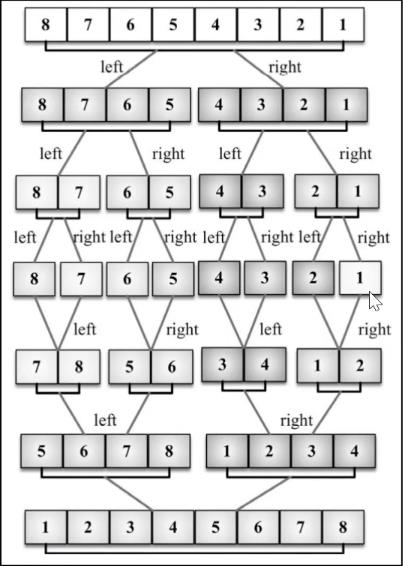
// 归并排序
function mergeSort(array)
const length = array;
if (length > 1)
const middle = Math.floor(length / 2);
const left = mergeSort(array.slice(0, middle))
const right = mergeSort(array.slice(middle, length))
array = merge(left, right)
return array
function merge(left, right)
let i = 0;
let j = 0;
const result = [];
while (i < left.length && j < right.length)
result.push(left[i] < right[j] ? left[i++] : right[j++])
return result.concat(i < left.length ? left.slice(i): right.slice(i))
9.5 快速排序
function quickSort(arr)
const length = arr
if (length < 2)
return arr
let base = arr[0]
let minArr = arr.slice(1).filter(item => item <= base)
let maxArr = arr.slice(1).filter(item => item > base)
minArr = quickSort(minArr)
maxArr = quickSort(maxArr)
return minArr.concat(base).concat(maxArr)
9.6 计数排序
计数排序使用一个用来存储每个元素在原始数组中出现次数的临时数组。在所有元素都计数完成后,临时数组已排好序并可迭代以构建排序后的结果数组
// 计数排序
function countSort(arr)
if (arr.length < 2)
return arr;
const maxValue = Math.max(...arr);
const counts = new Array(maxValue + 1);
arr.forEach((item) =>
if (!counts[item])
counts[item] = 0;
counts[item]++;
);
let newArr = [];
let sortIndex = 0;
counts.forEach((item, index) =>
while (item > 0)
newArr[sortIndex++] = index;
item--;
);
return newArr;
9.7 桶排序
桶排序(箱排序)也是分布式排序算法,它将元素分为不同的桶(较小的数组),再使用一个简单的排序算法,例如插入排序(用来排序小数组的不错的算法),来对每个桶进行排序,然后,它将所有的桶合并为结果数组
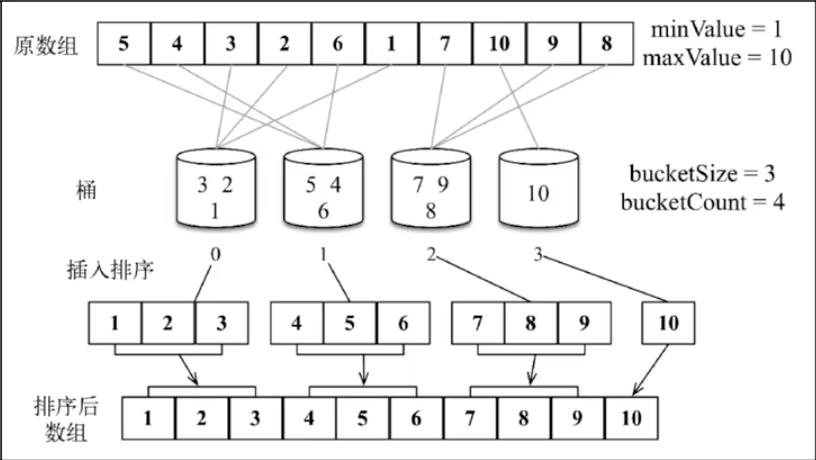
function bucketSort(arr, bucketSize = 3)
if (arr.length < 2)
return arr;
// 创建几个小桶
const buckets = createBucket(arr, bucketSize);
// 小桶排序(插入排序算法),合并concat
return sortBuckets(buckets);
function createBucket(arr, bucketSize)
minValue = Math.min(...arr);
maxValue = Math.max(...arr);
const bucketCount = Math.floor((maxValue - minValue) / bucketSize) + 1;
const buckets = [...Array(bucketCount)].map(() => []);
for (let i = 0; i < arr.length; i++)
const index = Math.floor((arr[i] - minValue) / bucketSize);
buckets[index].push(arr[i]);
return buckets;
function sortBuckets(arr)
let sortArr = [];
for (let i = 0; i < arr.length; i++)
if (arr[i])
insertSort(arr[i]);
sortArr = sortArr.concat(arr[i]);
// 插入排序
function insertSort(arr)
const length = arr;
let temp;
for (let i = 1; i < length; i++)
temp = arr[i];
let j = i;
while (j > 0)
arr[j] = arr[j - 1];
j--;
arr[j] = temp;
return arr;
9.8 基数排序
基数排序是一种非比较型整数排序算法,其原理是将整数按位数切割成不同的数字,然后按每个位数分别比较。由于整数也可以表达字符串(比如名字或日期)和特定格式的浮点数,所以基数排序也不是只能使用于整数。
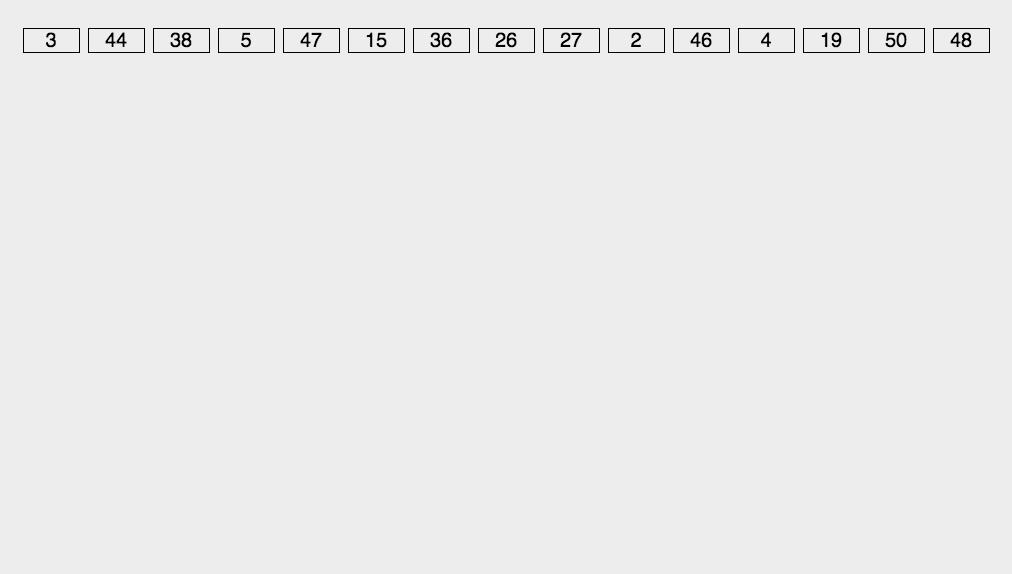
// 基数排序
function radixSort(arr)
const base = 10;
let divider = 1;
const maxValue = Math.max(...arr);
while (divider <= maxValue)
// 构建二维数组
let buckets = [...Array(10)].map(() => []);
for (let val of arr)
buckets[Math.floor(val / divider) % base].push(val);
console.log(buckets);
arr = [].concat(...buckets);
divider *= base;
return arr
10. 搜索算法
10.1 顺序搜索
顺序或线性搜索是最基本的搜索算法。它的机制是,将每一个数据结构中的元素和我们要找的元素作比较。顺序搜索是最低效的一种搜索算法
function sequentialSearch(arr, val)
for (let i = 0; i < arr.length; i++)
if (arr[i] == val)
return i
return -1
10.2 二分搜索
在计算机科学中,二分搜索(英语:binary search),也称折半搜索(英语:half-interval search)、对数搜索(英语:logarithmic search),是一种在有序数组中查找某一特定元素的搜索算法。搜索过程从数组的中间元素开始,如果中间元素正好是要查找的元素,则搜索过程结束;如果某一特定元素大于或者小于中间元素,则在数组大于或小于中间元素的那一半中查找,而且跟开始一样从中间元素开始比较。如果在某一步骤数组为空,则代表找不到。这种搜索算法每一次比较都使搜索范围缩小一半。

10.3 内插搜索
内插搜索是改良的二分搜索。二分搜索总是检查mid位置上的值,而内插搜索可能会根据要搜索的值检查数组的不同地方

function quickSort(arr)
const length = arr;
if (length < 2)
return arr;
let base = arr[0];
let minArr = arr.slice(1).filter((item) => item <= base);
let maxArr = arr.slice(1).filter((item) => item > base);
minArr = quickSort(minArr);
maxArr = quickSort(maxArr);
return minArr.concat(base).concat(maxArr);
// 内插搜索
function insertSearch(val, arr, start, end)
start = start || 0;
end = end || arr.length - 1;
arr = quickSort(arr);
if (start <= end && val >= arr[start] && val <= arr[end])
if (arr[start] === val)
return start;
if (arr[end] === val)
return end;
// 适用于分布比较均匀
let mid = start + (val - arr[start]) / (arr[end] - arr[start]) * (end - start)
if (arr[mid] === val)
return mid;
else if (arr[mid] > val)
return binarySearch(val, arr, start, mid - 1);
else
return binarySearch(val, arr, mid + 1, end);
return -1;
11. 随机算法
迭代数组,从最后一位开始并将当前位置和一个随机位置进行交换。这个随机位置比当前位置小。这样,这个算法可以保证随机过的位置不会再被随机一次
// 交换位置
function swap(array, index1, index2)
const temp = array[index1];
array[index1] = array[index2];
array[index2] = temp;
function shuffle(array)
for (let i = array.length - 1; i > 0; i--)
const randomIndex = Math.floor(Math.random() * (i + 1));
swap(array, i, randomIndex);
12. 算法设计
12.1 分而治之
分而治之是算法设计中的一种方法。它将一个问题分成多个原问题相似的小问题,递归解决小问题,再将解决方式合并以解决原来的问题
分而治之算法可以分成三个部分:
- 分解原问题为多个子问题(原问题的多个小实例)
- 解决子问题,用返回解决子问题的方式的递归算法。递归算法的基本情形可以用来解决子问题
- 组合这些子问题的解决方式。得到原问题的解
12.2 动态规划
动态规划(dynamic programming,DP)是一种将复杂问题分解成更小的子问题来解决的优化技术
用动态规划解决问题时,需要尊徐三个重要步骤:
- 定义子问题
- 实现要反复执行来解决子问题的部分
- 识别并求解出基线条件
12.2.1 背包问题
// 背包问题
function knapSack(weights, values, totalWeight)
var n = weights.length - 1;
var f = [[]];
for (var j = 0; j <= totalWeight; j++)
if (j < weights[0])
f[0][j] = 0;
else
f[0][j] = values[0];
for (var j = 0; j <= totalWeight; j++)
for (var i = 1; i <= n; i++)
if (!f[i])
f[i] = [];
if (j < weights[i])
f[i][j] = f[i - 1][j];
else
// f[i - 1][j] 上一行的最优解
// f[i - 1][j - weights[i]] + values[i] 减去当前重量后,剩下重量的最优解 + 当前重量的价值
f[i][j] = Math.max(f[i - 1][j], f[i - 1][j - weights[i]] + values[i]);
return f[n][totalWeight]
12.2.2 最长公共子序列
找出两个字符串序列的最长子序列的长度。最长子序列是指,在两个字符串序列中以相同顺序出现,但不要求连续(非字符串子串)的字符串序列
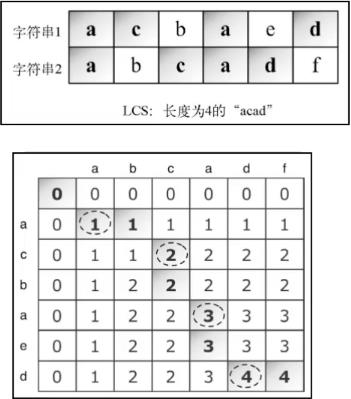
// 最长公共子序列
function LCS(str1, str2)
var m = str1.length; // 行数
var n = str2.length; // 列数
var dp = [new Array(n + 1)].fill(0); // 第一行全是0
for (var i = 1; i <= m; i++)
// 一共有m+1行
dp[i] = [0]; // 第一列全是0
for (var j = 1; j <= n; j++)
if (str1[i - 1] === str2[j - 1])
dp[i][j] = dp[i - 1][j - 1] + 1;
else
dp[i][j] = Math.max(dp[i - 1][j], dp[i][j - 1]);
printLCS(dp, str1, str2, m, n);
return dp[m][n];
function printLCS(dp, str1, str2, i, j)
if (i === 0 || j === 0)
return \'\';
if (str1[i - 1] === str2[j - 1])
return printLCS(dp, str1, str2, i - 1, j - 1) + str1[i - 1];
else
if (dp[i][j - 1] > dp[i - 1][j])
return printLCS(dp, str1, str2, i, j - 1);
else
return printLCS(dp, str1, str2, i - 1, j);
12.3 贪心算法
在对问题求解时,总是做出在当前看来是最好的选择。也就是说,不从整体最优上加以考虑,他所做出的仅是在某种意义上的局部最优解。贪心算法不是对说有问题都能得到整体最优解,但对范围相当广泛的许多问题他能产生整体最优解或者整体最优解的近似解
// 贪心算法
// 背包问题
function greedy(capacity, weights, values)
var list = [];
for (var i = 0; i < weights.length; i++)
list.push(
num: i + 1,
w: weights[i],
v: values[i],
rate: values[i] / weights[i],
);
list.sort((a, b) => b.rate - a.rate);
var selects = []
var total = 0
for (let i = 0; i < list.length; i++)
var item = list[i]
if (item.w <= capacity)
selects.push(
num: item.num,
rate: 1,
v: item.v,
w: item.w
)
total += item.v
capacity -= item.w
else if (capacity > 0)
var rate = capacity / item.w
var v = item.v * rate
selects.push(
num: item.num,
rate,
v: item.v * rate,
w: item.w * rate,
);
12.2.4 回溯算法
回溯法采用试错的思想,它尝试分步的去解决一个问题。在分步解决问题的过程中,当它通过尝试发现现有的分步答案不能得到有效的正确的解答的时候,它将取消上一步甚至上几步的计算,再通过其他的可能的分布解答再次尝试寻找问题的答案
示例:
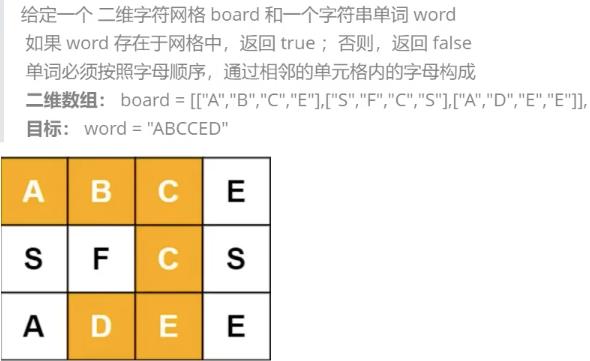
// 回溯算法
function backTracking(board, word)
// 设置行列数
let row = board.length;
let col = board[0].length;
// 双循环,每个坐标都尝试,作目标的第1个元素
for (let i = 0; i < row; i++)
for (let j = 0; j < col; j++)
// 从宫格图中第一个开始找(i, j),找目标第一个字母(word[0])
const result = find(i, j, 0); // 返回true或false
if (result)
return result;
// 结束了都没找到,返回false
return false;
function find(r, c, cur)
if (r >= row || r < 0) return false;
if (c >= col || c < 0) return false;
if (board[r][c] !== word[cur]) return false; // 不是目标元素则返回false
// 执行到这,说明rc坐标是目标元素
// 先判断,如果是最后一个也找到了,返回true结束
if (cur === word.length - 1) return true;
let letter = board[r][c]; // 赋值给临时变量
board[r][c] = null; // 用null作替换标记,避免下一个找上下左右时重复
// 进行下一步,上下左右查找
const result =
find(r - 1, c, cur + 1) ||
find(r + 1, c, cur + 1) ||
find(r, c + 1, cur + 1) ||
find(r, c - 1, cur + 1);
// 用null作标记是避免重复,但双for的find结束就需要恢复
board[r][c] = letter;
return result;
var res = backTracking(
[
[\'A\', \'B\', \'C\', \'E\'],
[\'S\', \'F\', \'C\', \'S\'],
[\'A\', \'D\', \'E\', \'F\'],
],
\'ABCCED\'
);
console.log(res);
13. 算法复杂度
O表示法用于藐视算法的性能和复杂程度。O表示法将算法按照消耗的时间进行分类,依据随输入增大所需要的空间/内存;可根据循环的次数判断其复杂度

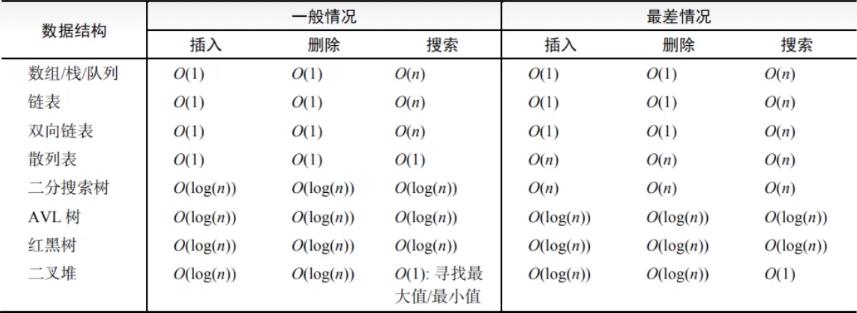
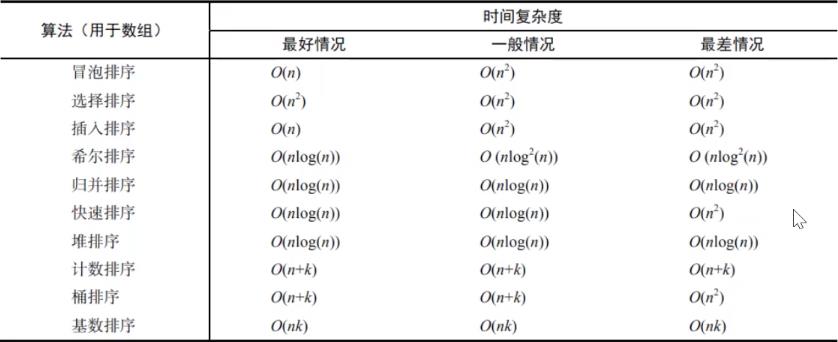
- O(1)
function inc(n)
return ++n
- O(n)
function sequentialSearch(arr, val)
for (let i = 0; i < arr.length; i++)
if (arr[i] == val)
return i;
return -1;
- O(n^2)
function bubblesort(array)
const length = array;
for (let i = 0; i < length; i++)
for (let j = 0; j < length - 1 - i; j++)
if (array[j] > array[j + 1])
// 交换位置
swap(array, j, j + 1);
数据结构与算法学习笔记 查找
数据结构与算法学习笔记(9) 查找

文章目录
一.查找的基本概念
-
查找表

-
何为查找

-
怎样算找到
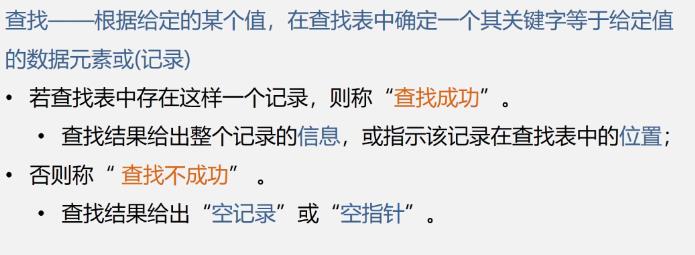
-
查找的目的
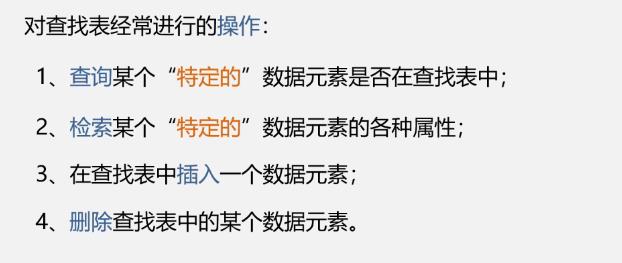
-
查找表的分类
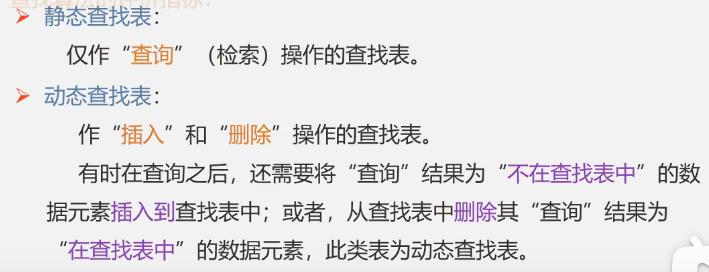
-
查找算法的评价指标
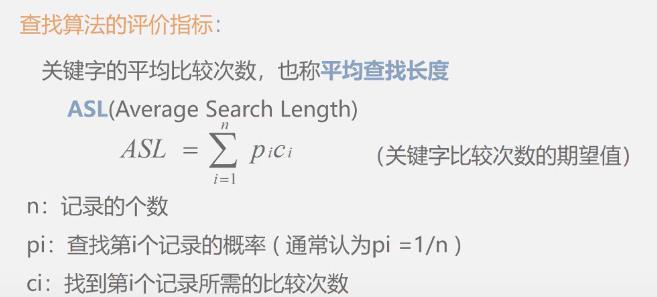
-
查找过程的研究内容

二.线性表的查找
1.顺序查找
应用范围
-
顺序表或线性链表表示的静态查找表
-
表内元素之间无序
-
顺序表的表示
-
数据元素类型定义
typedef struct KeyType key; //关键字域 ...... //其他域 ElemType; typedef struct //顺序表结构类型定义 ElemType *R; //表基址 int length; //表长 SSTable; SSTable ST; //定义顺序表ST
-
算法

基本形式
int Search_Seq(SSTable ST,KeyType Key)
//若成功返回其位置信息,否则返回0
for(i=ST.length;i>=1;--i)
if(ST.R[i].key==key)
return i;
return 0;
该算法的其他形式:


这种形式for循环要加分号
改进算法
-
把待查关键字key存入表头,从后往前逐个比较,可免去查找过程中每一步都要检测是否查找完毕,加快速度
这样子就无需判断是否越界了
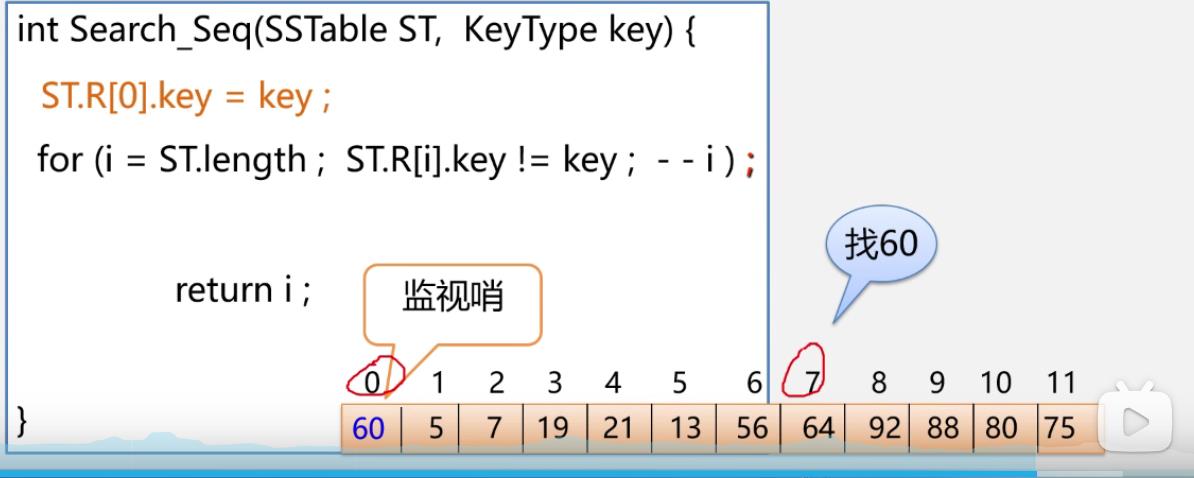
循环体是空语句,不要忘了分号
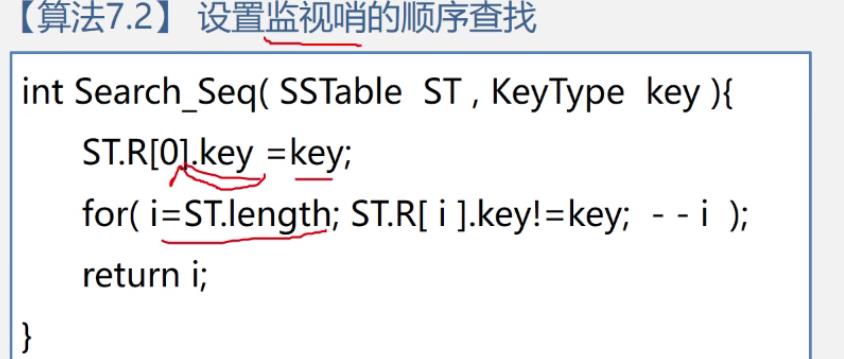
-
当ST.length较大时,此改进能使进行一次查找所需的时间几乎减少一半
-
算法效率分析

-
时间复杂度:O(n)

-
空间复杂度: 一个辅助空间——O(1)
-
-
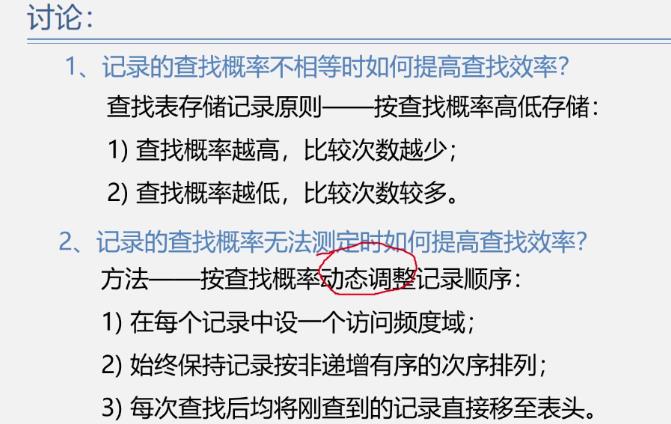
特点
-
优点:
算法简单,逻辑次序无要求,且不同存储结构均适用
-
缺点:
ASL太长,时间效率太低
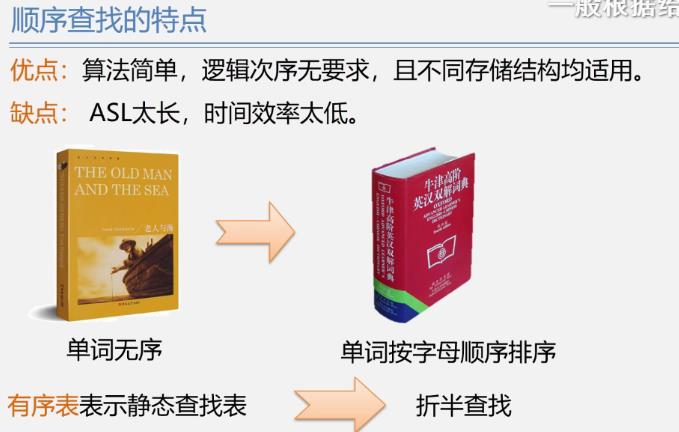
2.折半查找(二分查找)
-
折半查找:
每次将待查记录所在区间缩小一半
非递归算法
-
查找过程举例:
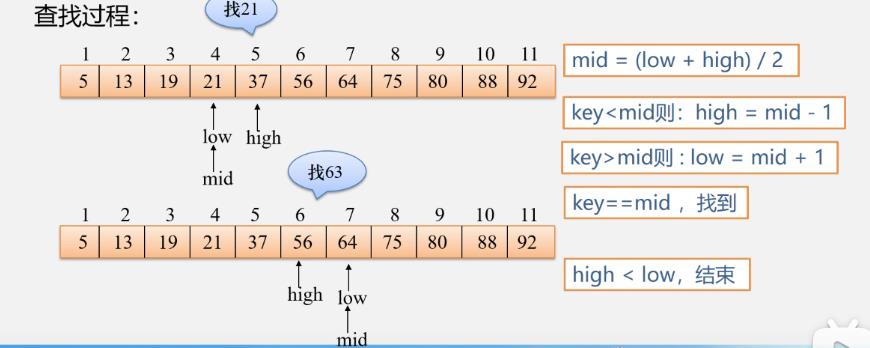
-
算法分析(非递归)
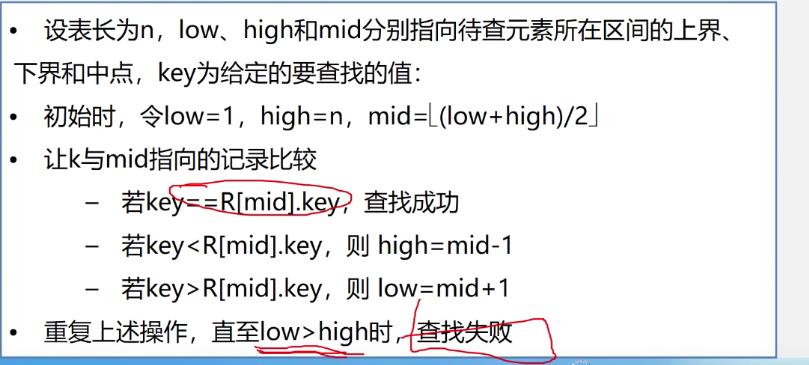
int Search_Bin(SSTable ST, KeyType key) low = 1; high = ST.length; //置区间初值 while(low <= high) mid = (low + high)/2; if(ST.R[mid].key == key) return mid; //找到待查元素 else if(key < ST.R[mid].key) //缩小查找区间 high = mid -1; //继续在前半区进行查找 else low = mid + 1; //继续在后半区查找 return 0; //顺序表中不存在待查元素
递归算法
int Search_Bin(SSTable ST,keyType key, int low ,int high)
if(low>high)
return 0; //没找到返回0
mid = (low+high)/2;
if(key==ST.elem[mid].key)
return mid;
else if(key<ST.elem[mid].key)
return Search_Bin(ST,key,low,mid-1); //前半区查找
else
return Search_Bin(ST,key,mid+1,high); //后半区查找
return 0;
算法分析
判定树
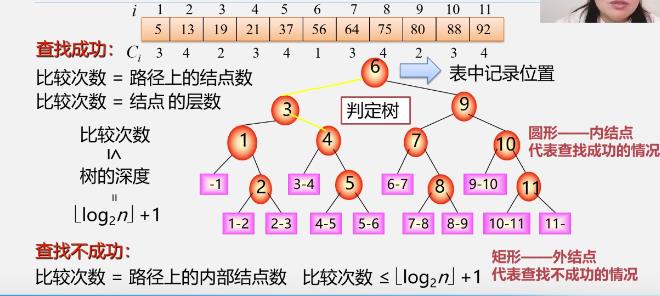
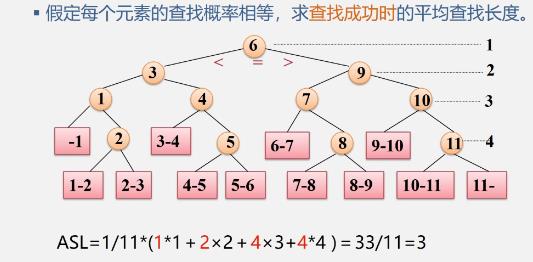
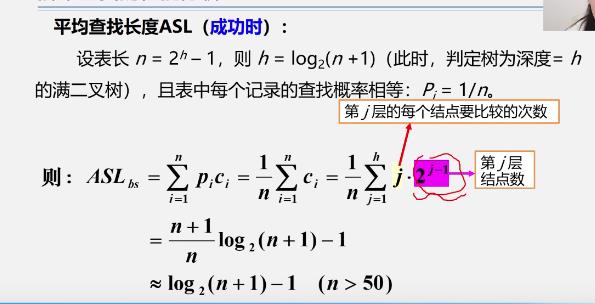
优缺点
- 优点
- 效率比顺序查找高
- 缺点
- 只适用于有序表,且限于顺序存储结构(对线性链表无效)
3.分块查找(索引查找)
- 很形象的一个例子就是
- 英文字典,分成了26个字母
条件
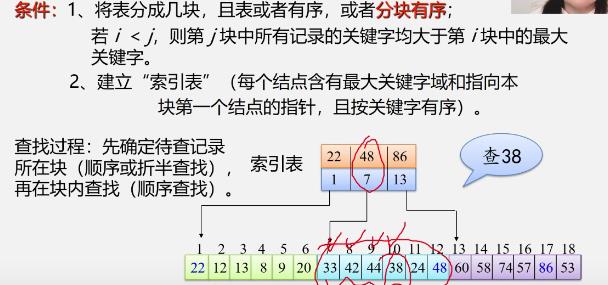
性能分析
-
查找效率
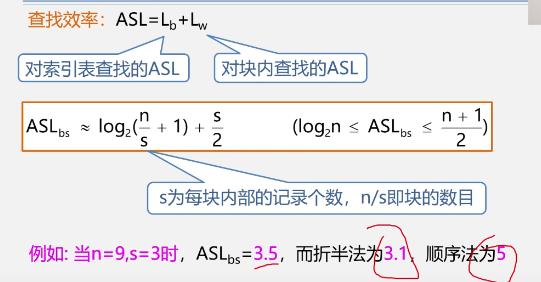
-
优缺点

4.查找方法比较
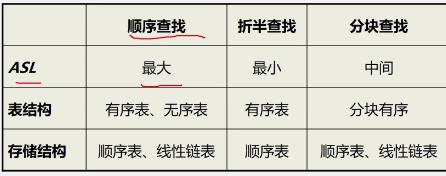
三.树表的查找
- 顺序表的二分查找效率高,但是只适用于顺序表
1.二叉排序树
二叉排序树定义
-
二叉排序树也称为二叉搜索树、二叉查找树
-
定义

是一个递归定义
-
例

中序遍历二叉排序树的规律
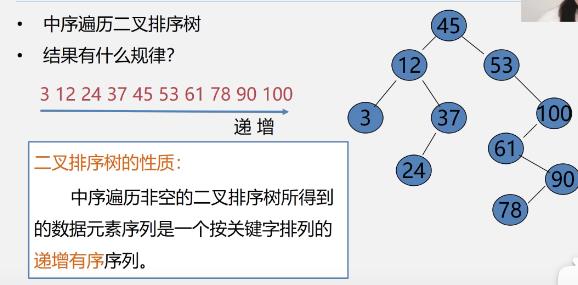
二叉排序树查找–递归算法
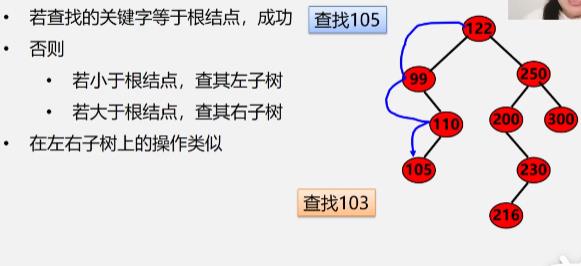
-
二叉排序树的存储结构
typedef struct KeyType key; //关键字项 InfoType otherinfo; //其他数据域 ElemType;typedef struct BSTNode ElemType data; //数据域 struct BSTNode *lchild,*rchild; //左右孩子指针 BSTNode, *BSTree; BSTree T; //定义二叉排序树T -
算法思想
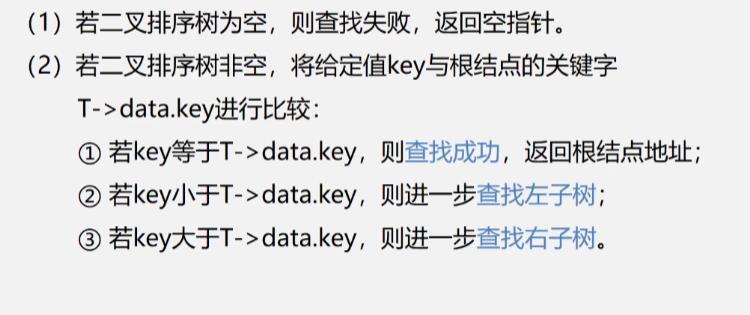
-
算法描述
BSTree SearchBST(BSTree T,KeyType key) if((!T)||key==T->data.key) //树为空或者找到了直接return指针 return T; else if(key<T->data.key) retrun SearchBST(T->lchild,key); //在左子树中继续查找 else return SearchBST(T->rchild,key); //在右子树中继续查找 -
查找分析
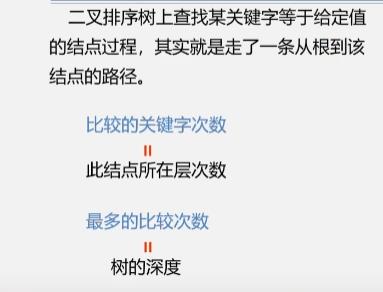
-
平均查找长度
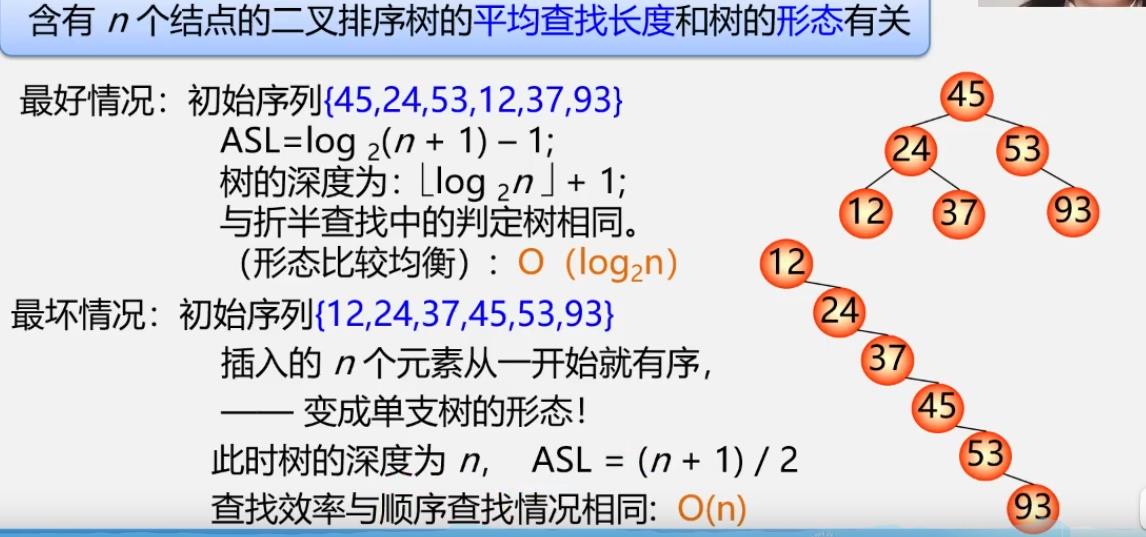
-
如何提高形态不均衡的二叉排序树的查找效率

-
二叉排序树的操作-插入
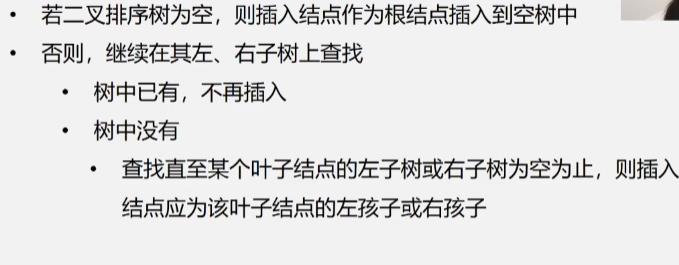
- 插入的元素一定在叶结点上
二叉排序树的操作-生成

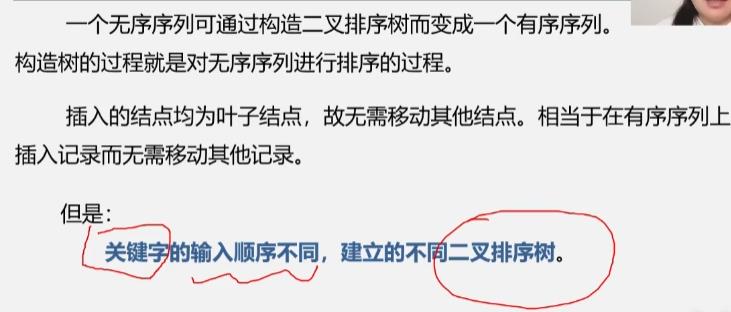
-
不同插入次序的序列生成不同形态的二叉排序树
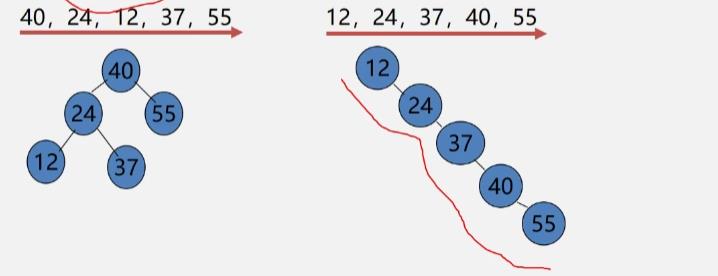
二叉排序树的操作-删除
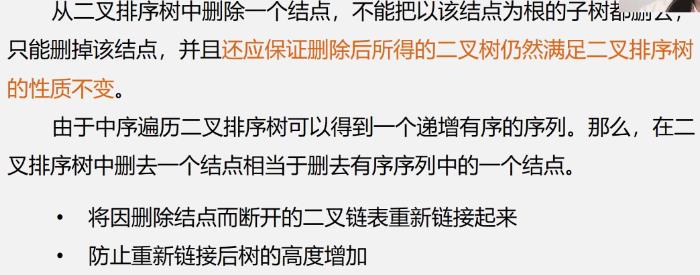
删除叶子结点
- 直接删去
- 将其双亲结点中相应指针域的值改为”空“
被删除的结点只有左子树或者右子树
- 用其左子树或者右子树替换它
- 将其双亲结点的相应指针域的值改为”指向被删除结点的左子树或右子树“
被删除的结点既有左子树,也有右子树
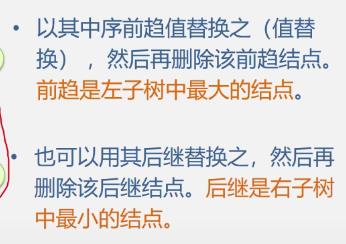
-
例
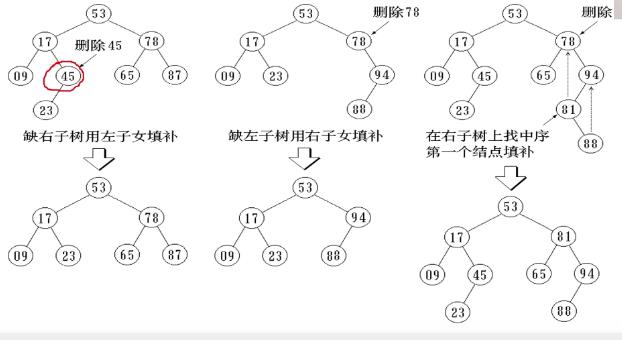
图3也可以用65来换,但是用65的话,树的高度没变
用81换可以减小树的高度
总结
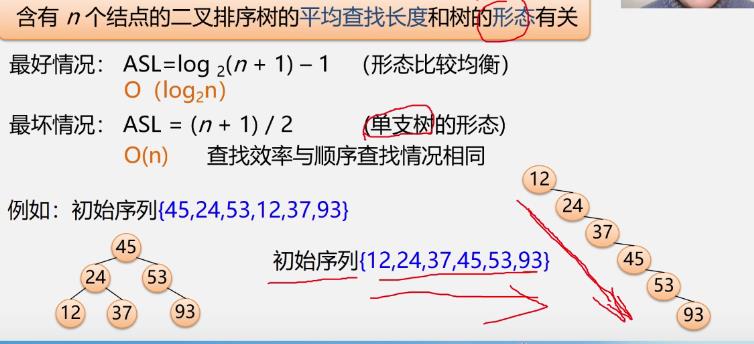
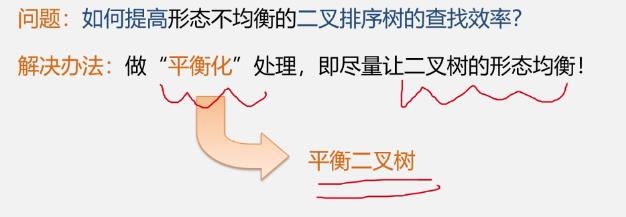
2.平衡二叉树
平衡二叉树定义
-
又称AVL树
-
平衡二叉树首先满足是二叉排序树

-
平衡因子

-
例
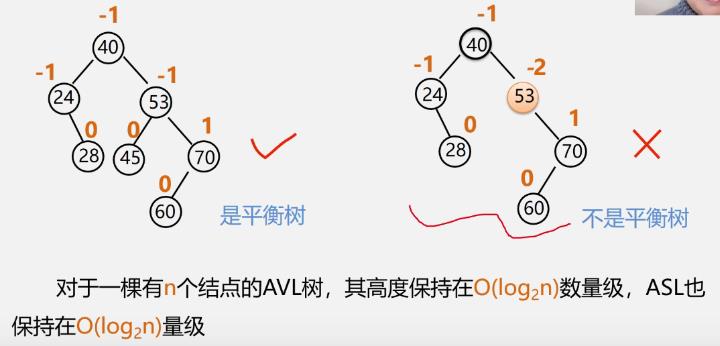
ASL:平均查找长度
失衡二叉排序树的分析与调整
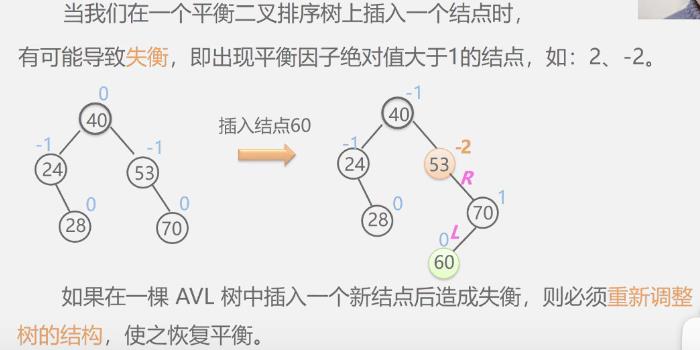
平衡调整的四种类型
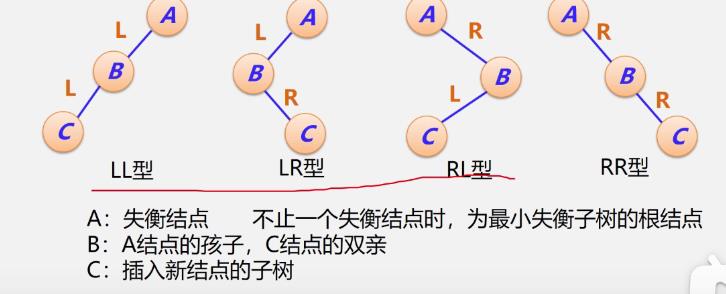
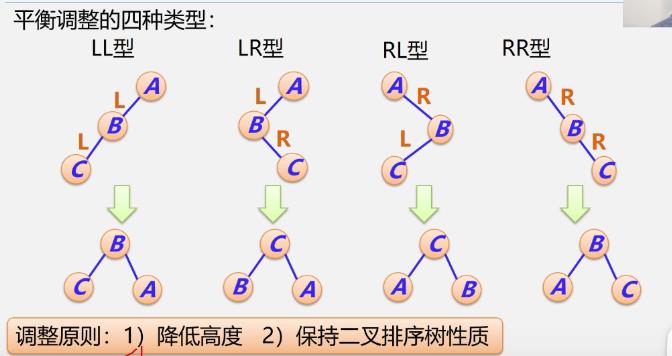
抓住调整原则
LL型

-
例
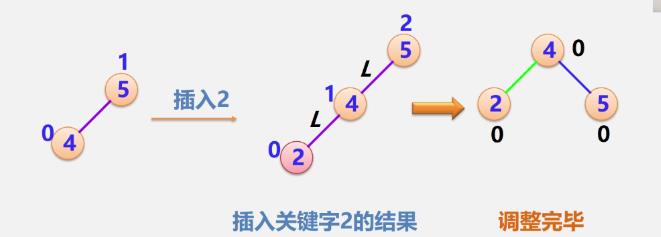
RR型
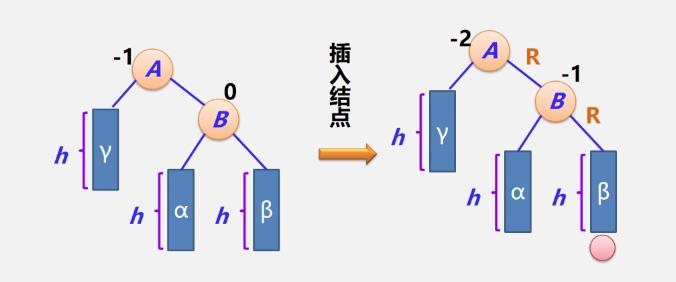
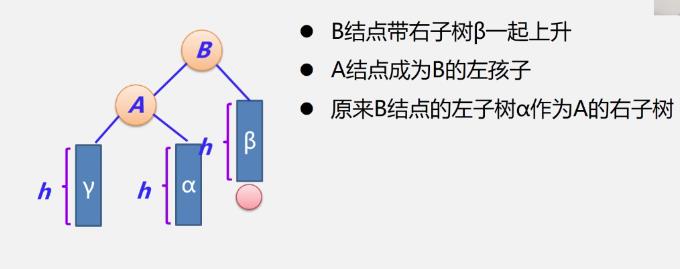
LR型
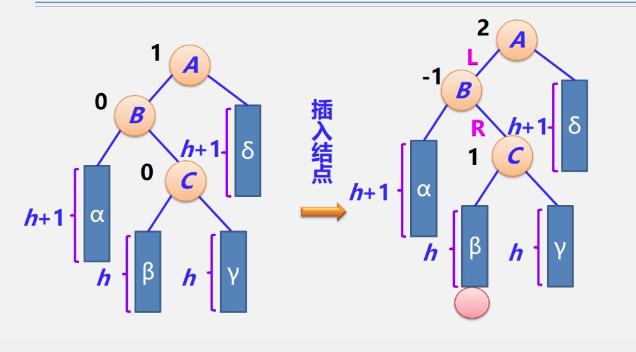
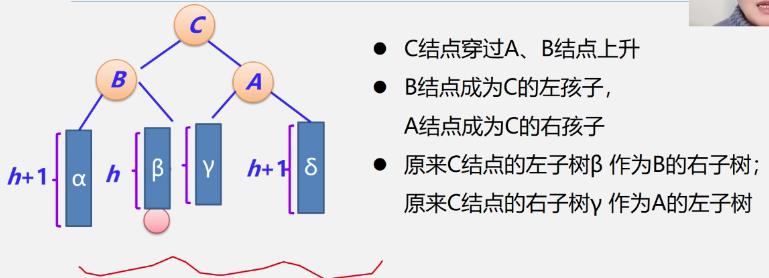
RL型
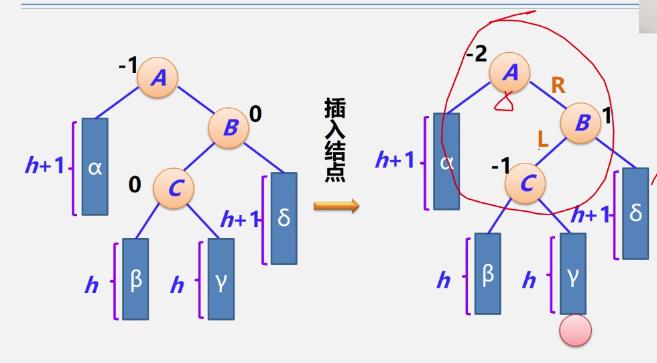
-
例
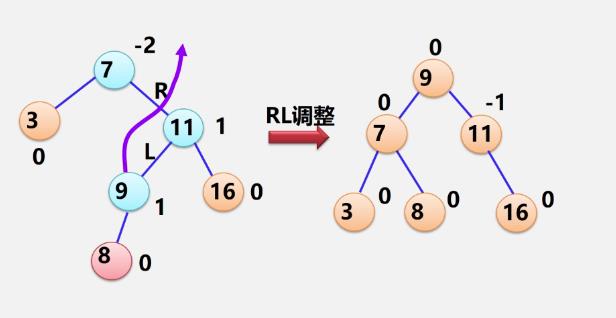
四.散列表的查找
1.基本概念
-
基本思想
记录的存储位置与关键字之间存在对应关系–hash(哈希)函数
Loc(i)=H(keyi) -
例

-
如何查找

-
2.一些术语
-
散列方法(杂凑法)

-
散列函数(杂凑函数)
散列方法中使用的转换函数
-
散列表

-
冲突

-
例
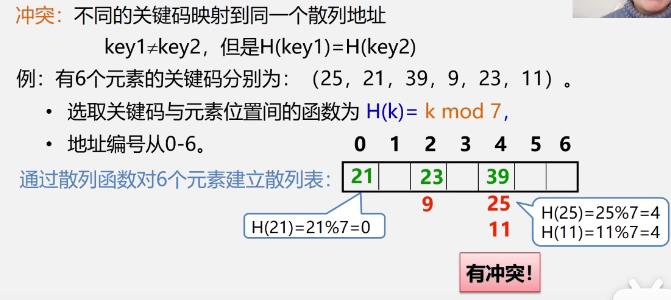
-
-
同义词
具有相同函数值的多个关键字
3.散列函数的构造方法
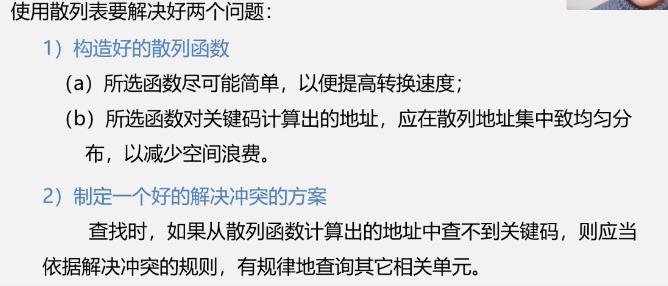
-
构造散列函数考虑的因素
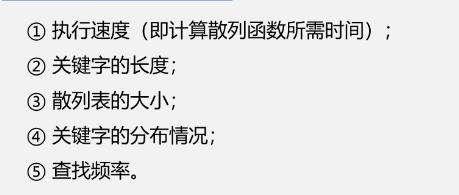
-
根据元素集合的特性构造

-
直接定址法
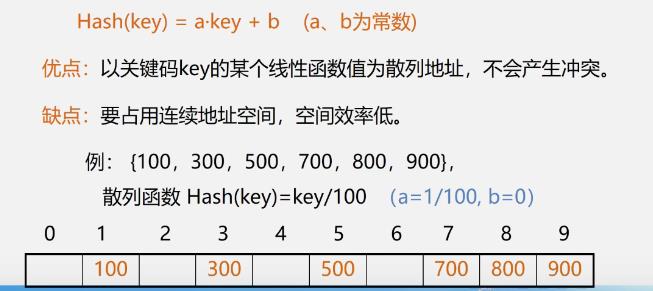
-
除留余数法
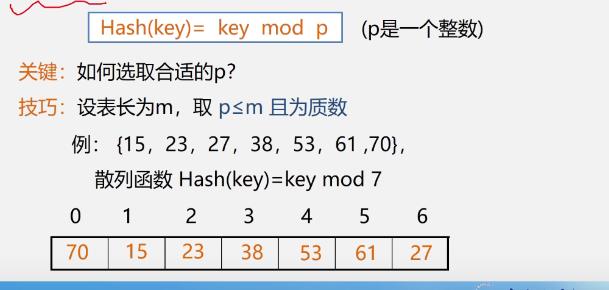
-
4.处理冲突的方法
开放地址法(开地址法)
-
基本思想
有冲突就去找下一个空的散列地址,只要散列表足够大
空的散列地址总能找到,并将数据元素存入
-
常用方法

-
线性探测法
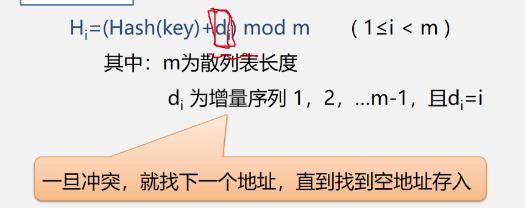
-
二次探测法
增量序列是二次序列
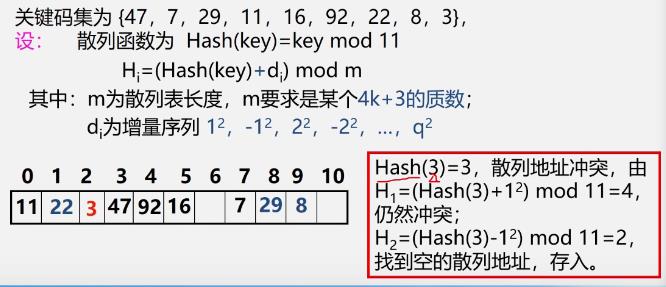
-
伪随机探测法

-
链地址法(拉链法)
-
基本思想:
相同散列地址的记录链成一单链表
m个散列地址就设m个单链表,然后用一个数组将m个单链表的表头指针存储起来,形成一个动态结构
-
如:
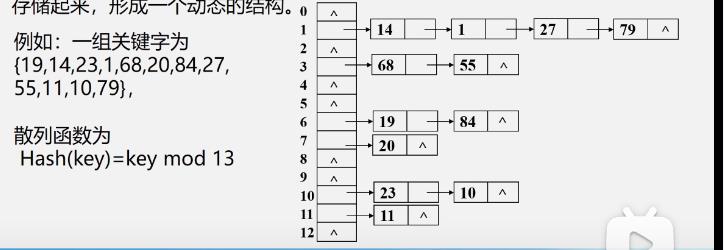
-
链地址法建立散列表步骤
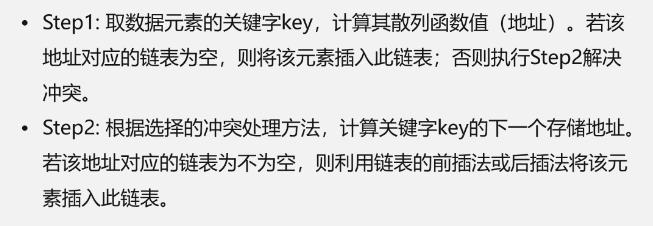
-
链地址法的优点

5.散列表的查找及性能分析
-
查找过程
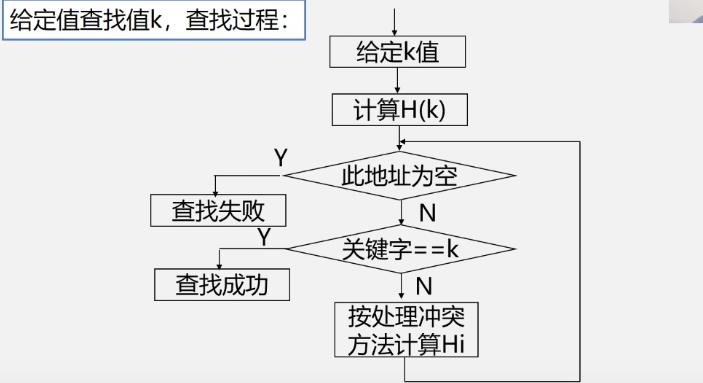
-
例
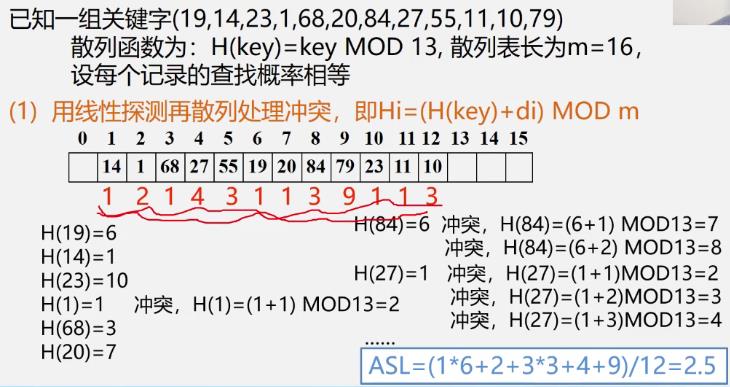
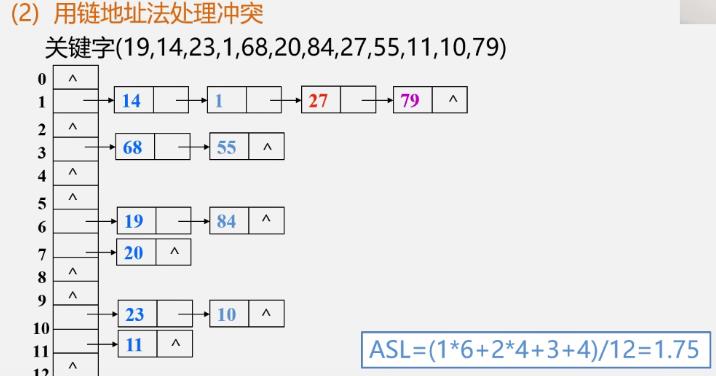
散列表查找效率分析
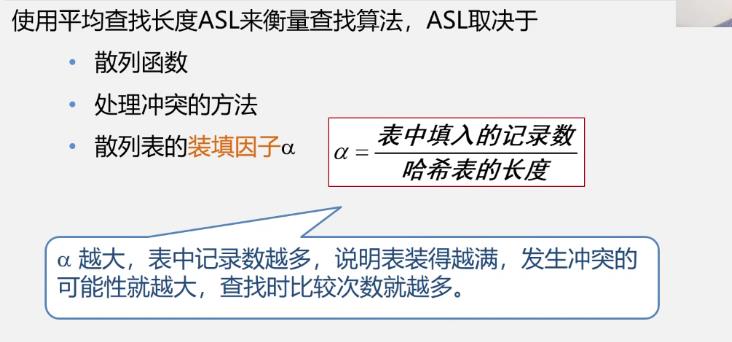
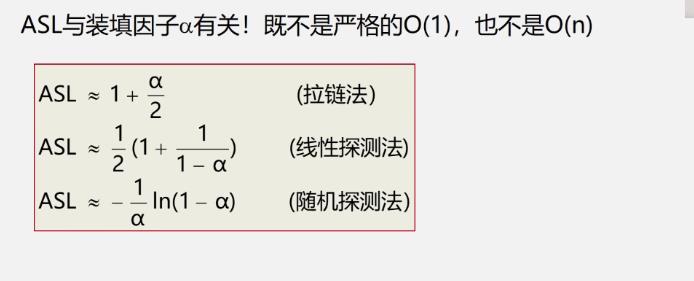
6.总结

以上是关于javascript数据结构与算法学习笔记的主要内容,如果未能解决你的问题,请参考以下文章
